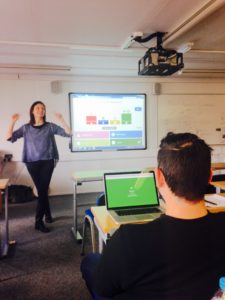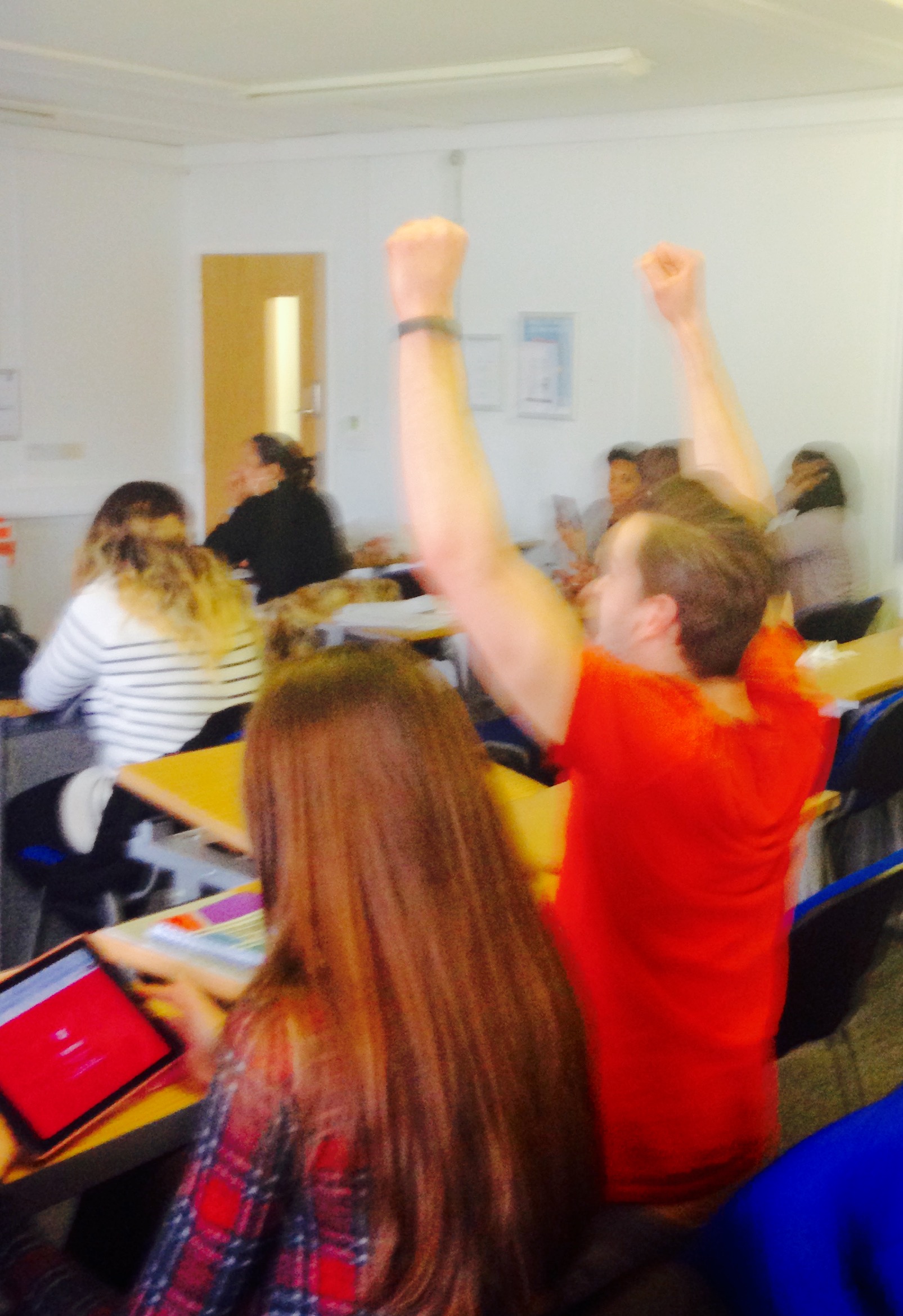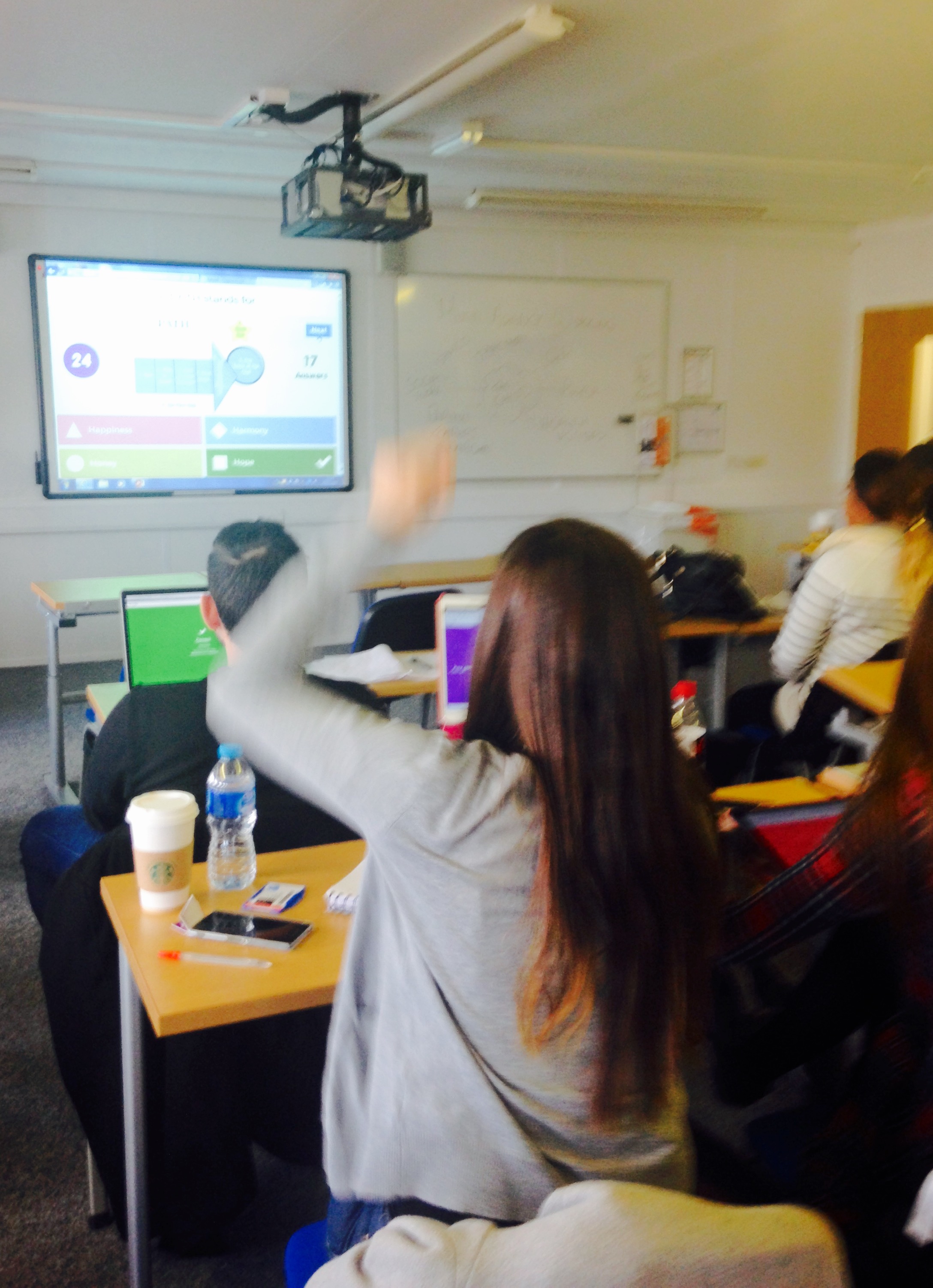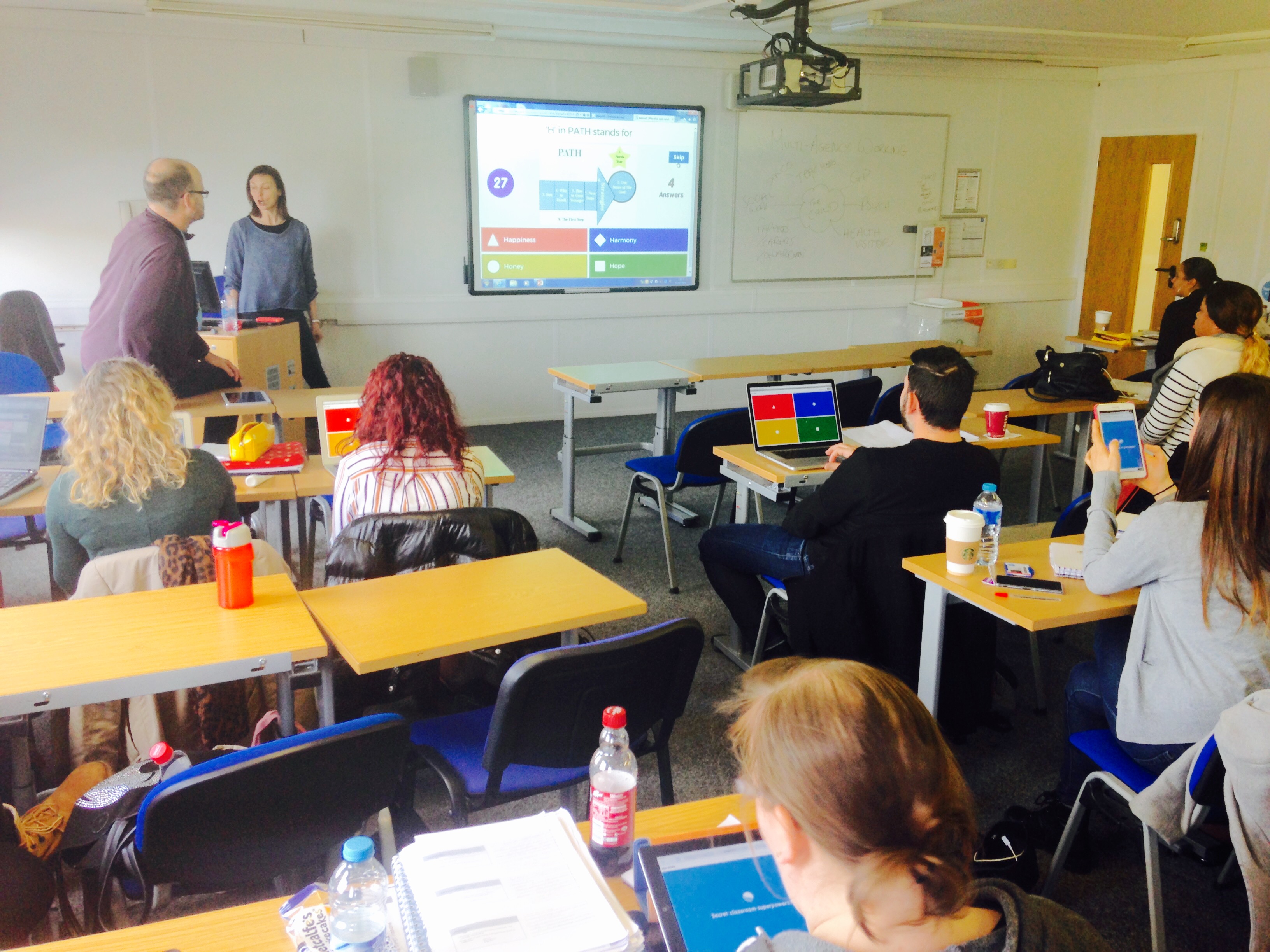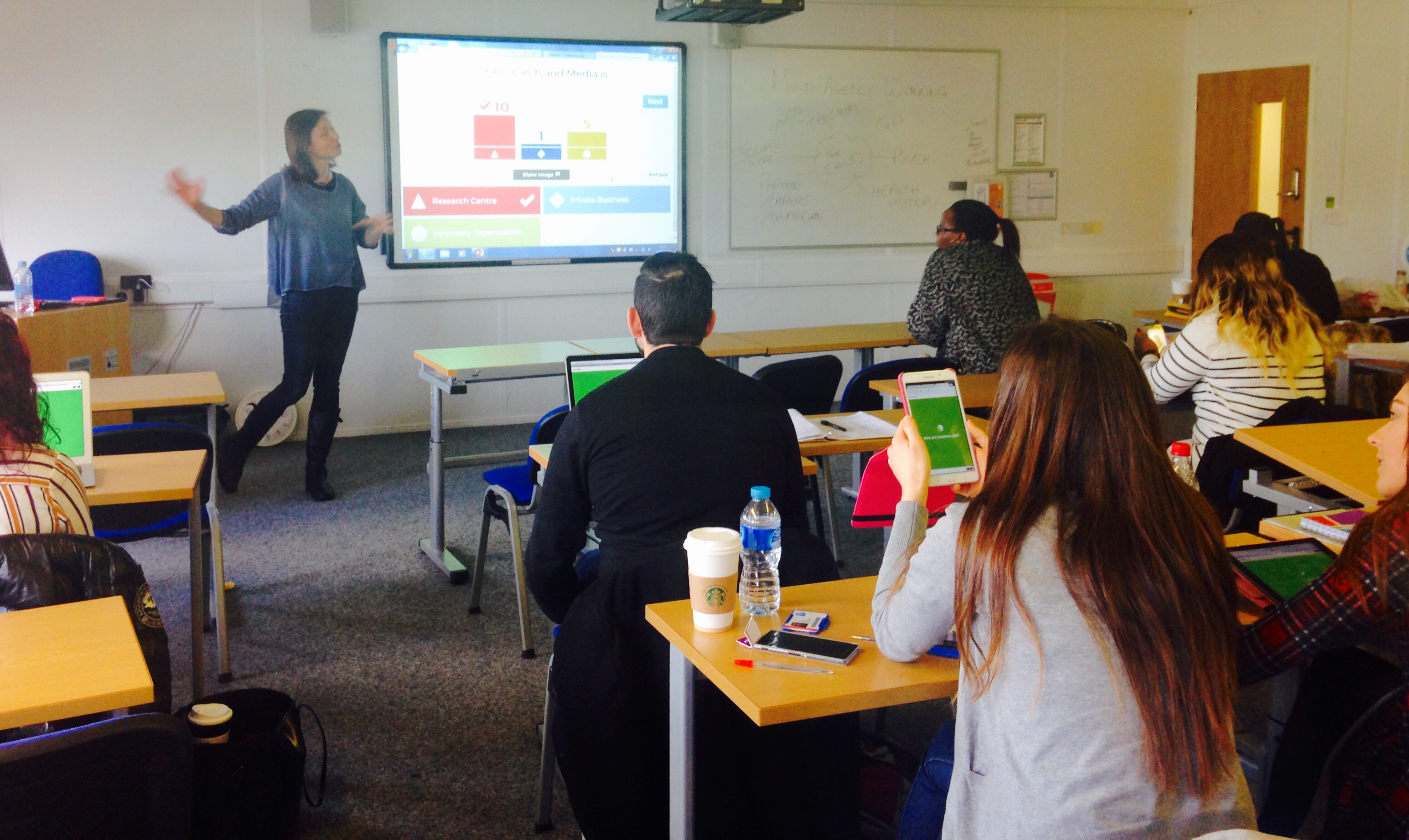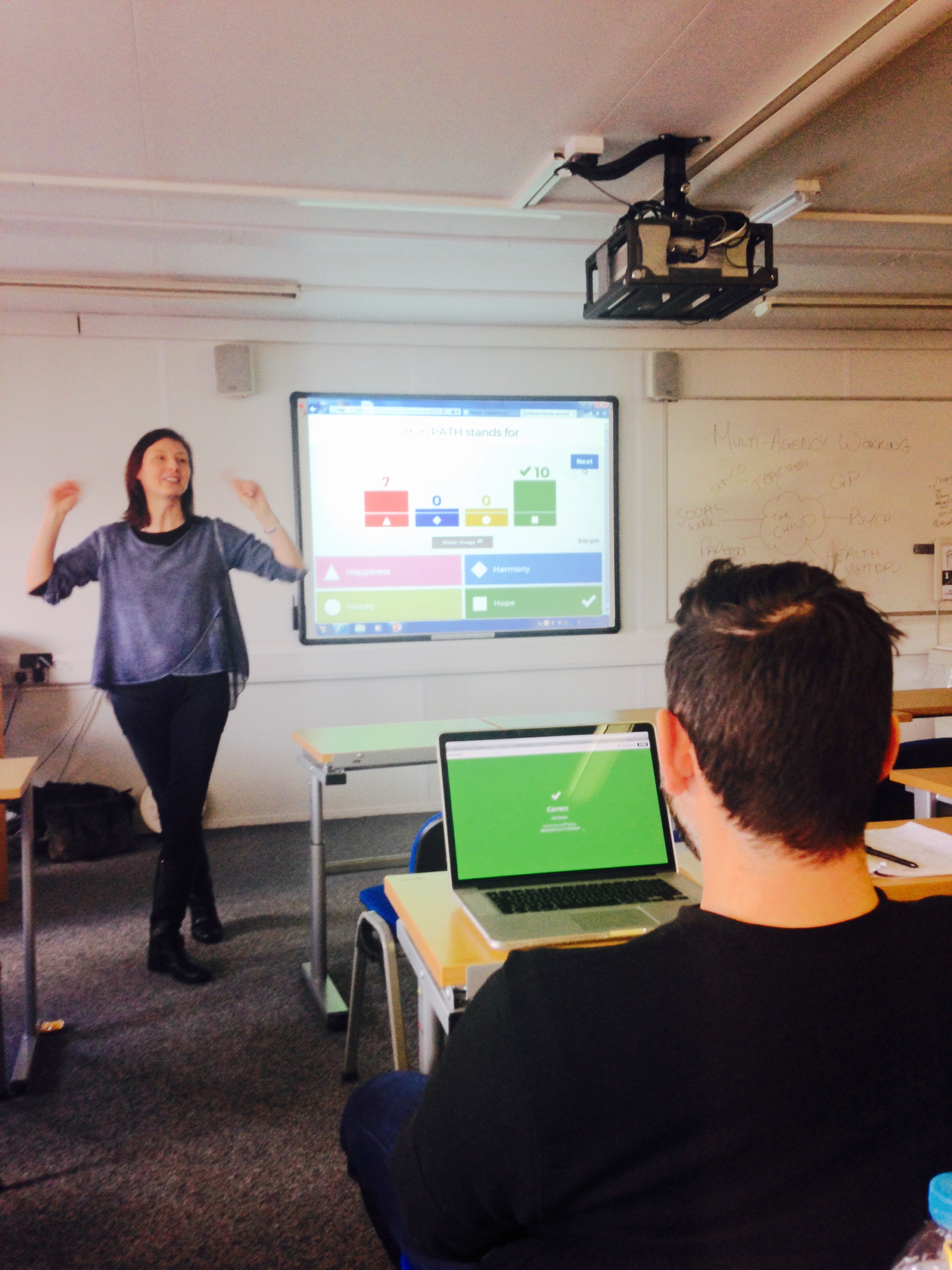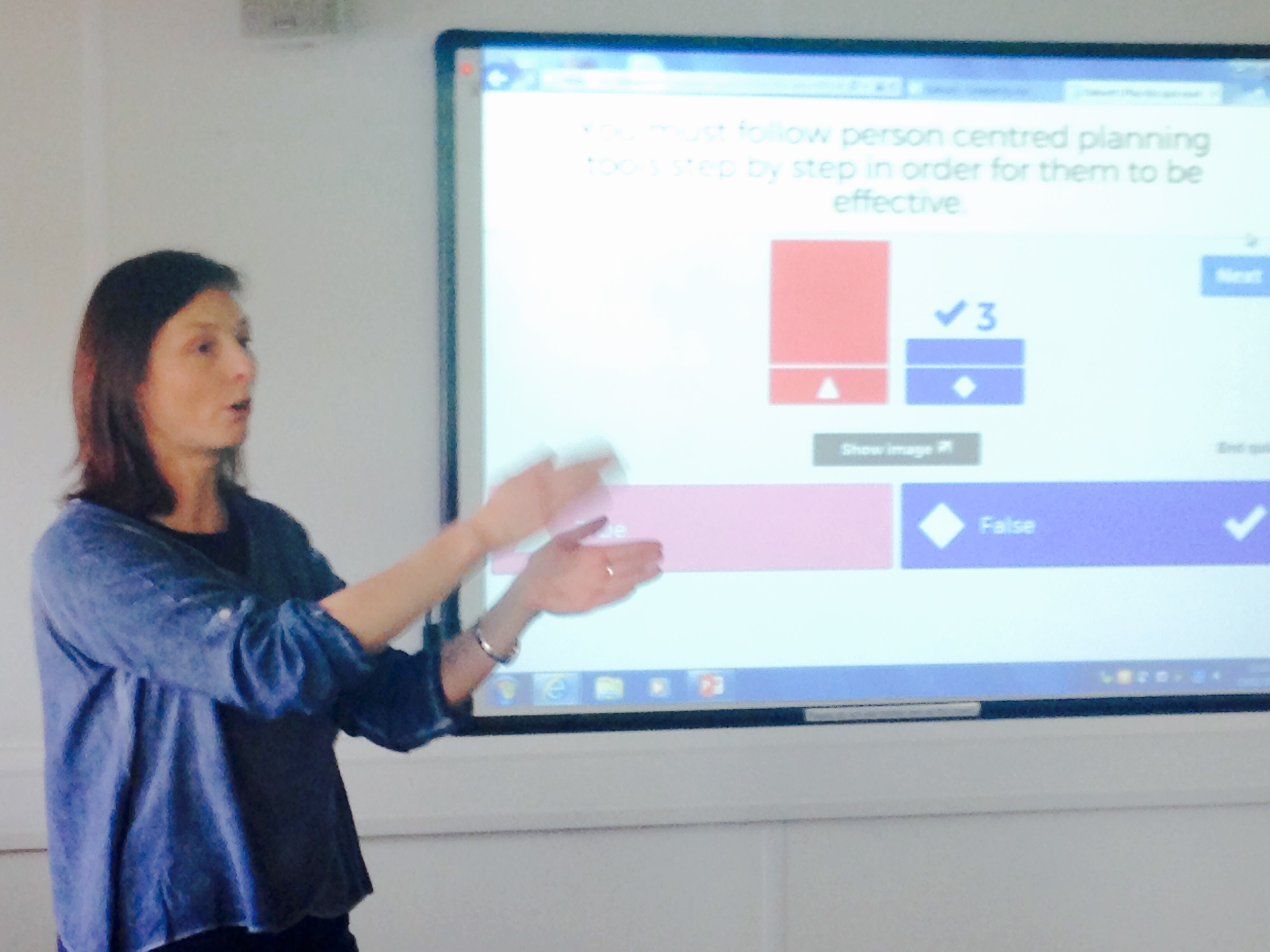WHAT DID YOU DO?
Gosia is a lecturer and researcher at the University of East London. Gosia was covering the teaching of a module for a colleague who was on sabbatical leave. She had taught on this module previously for just a few lectures but did not have any experience of leading the module. When Gosia met the class and delivered the first lecture she was shocked to see how disengaged the students were. “I could not believe how difficult it was for me to engage them and keep them focused during my two hour slot. It was so draining that I knew I had to do something about it.” Gosia addressed the lack of student engagement by introducing competitive polls during contact hours to increase student engagement and retention. She started to introduce gamification techniques into the learning environment using specific web applications in combination with the student’s own mobile devices (smart phones, tablets and laptops). “I thought about the students, who they are and what motivates them. They are all media design students and generally like computer games, so I decided to change my lecture style to meet their needs and make it more interesting.”
Gosia is a lecturer and researcher at the University of East London. Gosia was covering the teaching of a module for a colleague who was on sabbatical leave. She had taught on this module previously for just a few lectures but did not have any experience of leading the module. When Gosia met the class and delivered the first lecture she was shocked to see how disengaged the students were. “I could not believe how difficult it was for me to engage them and keep them focused during my two hour slot. It was so draining that I knew I had to do something about it.” Gosia addressed the lack of student engagement by introducing competitive polls during contact hours to increase student engagement and retention. She started to introduce gamification techniques into the learning environment using specific web applications in combination with the student’s own mobile devices (smart phones, tablets and laptops). “I thought about the students, who they are and what motivates them. They are all media design students and generally like computer games, so I decided to change my lecture style to meet their needs and make it more interesting.”
HOW DID YOU DO IT?
From week two Gosia introduced the use of ‘Kahoot’ – a free online quiz and survey tool that can be accessed by all students via their own mobile devices. Before the lectures Gosia created quizzes in Kahoot on the Kahoot website: https://getkahoot.com/. Then in the lecture she launches the quiz on the Kahoot website. The quiz questions appear one at a time on the projector screen in the lecture theatre. Students then use their own smartphones, tablets or laptops to answer the questions. Kahoot is visually simple and striking – students select between coloured geometric symbols to choose their answer. Kahoot is also competitive: there is a second-by-second countdown to answer each question and students score points for each response (based on correctness and speed), which are displayed on a leaderboard after each question. Gosia used the Kahoot quizzes to improve student’s retention of subject knowledge. “I hoped that regular testing of knowledge, and returning to previous topics to test them, would help students’ retention of information.” She also augmented the Kahoot quizzes with additional quizzes and questionnaires for the student’s to complete in their private study using Moodle, the university’s virtual learning environment. Gosia also used Kahoot in another way with the students. When there was a large piece of reading to be completed, Gosia split the class into two groups allocating each group half of the reading. She asked each group to work together and create a Kahoot quiz about their own half of the reading. The opposing group then took the quiz.
From week two Gosia introduced the use of ‘Kahoot’ – a free online quiz and survey tool that can be accessed by all students via their own mobile devices. Before the lectures Gosia created quizzes in Kahoot on the Kahoot website: https://getkahoot.com/. Then in the lecture she launches the quiz on the Kahoot website. The quiz questions appear one at a time on the projector screen in the lecture theatre. Students then use their own smartphones, tablets or laptops to answer the questions. Kahoot is visually simple and striking – students select between coloured geometric symbols to choose their answer. Kahoot is also competitive: there is a second-by-second countdown to answer each question and students score points for each response (based on correctness and speed), which are displayed on a leaderboard after each question. Gosia used the Kahoot quizzes to improve student’s retention of subject knowledge. “I hoped that regular testing of knowledge, and returning to previous topics to test them, would help students’ retention of information.” She also augmented the Kahoot quizzes with additional quizzes and questionnaires for the student’s to complete in their private study using Moodle, the university’s virtual learning environment. Gosia also used Kahoot in another way with the students. When there was a large piece of reading to be completed, Gosia split the class into two groups allocating each group half of the reading. She asked each group to work together and create a Kahoot quiz about their own half of the reading. The opposing group then took the quiz.
WHY WERE TABLETS USED/WAS IT BENEFICIAL?
These techniques proved hugely beneficial to the level of the students’ engagement. Gosia noticed a marked increase in the student’s energy levels. She explains how “Suddenly, everyone was turning up on time, everyone was engaged and everyone was leaving my class buzzing with excitement and still talking about the subject after the lecture. I had managed to gamify the lectures and make them interesting for the students.” Using Kahoot enabled Gosia to gauge her students’ understanding and personalise and fine-tune her teaching accordingly in real-time as she delivered it. The programme, by showing the results after each question, instantly shows which students are struggling with which topics and this allowed Gosia to provide additional information or clarification exactly when it was required. The students enjoy using mobile devices in their personal lives so they liked using their devices to interact with the lecture. It is almost as if each student has their own personal game controller in their hand. The competitive element of Kahoot means that the students are using their mobile devices to not only interact with the lecture, but also with each other. Using mobile devices in the lecture also stopped them from becoming a distraction within the classroom. If students are logged in and using their device to play the Kahoot quiz then they cannot also be using it to surf the web or use social media. The use of mobile devices in the classroom also makes multimedia available as a teaching and learning tool. Kahoot employs on screen animation and movement, changing colours, music and sound effects to engage and stimulate the students. The end of semester feedback was overwhelmingly positive with scores of between 80-100% for the teaching related categories. Students commented that the module had been “very, very engaging and fun”, that “classes are interesting and interactive. I really love Kahoots!” and that “Kahoots let us see who has been paying attention in class.” On a sliding scale between ‘Definitely Disagree’ and ‘Definitely Agree’ all students on the module strongly agreed that the teaching had been intellectually stimulating. Without a doubt the gamification approach using mobile devices successfully motivated and stimulated the learners and improved their knowledge retention.
These techniques proved hugely beneficial to the level of the students’ engagement. Gosia noticed a marked increase in the student’s energy levels. She explains how “Suddenly, everyone was turning up on time, everyone was engaged and everyone was leaving my class buzzing with excitement and still talking about the subject after the lecture. I had managed to gamify the lectures and make them interesting for the students.” Using Kahoot enabled Gosia to gauge her students’ understanding and personalise and fine-tune her teaching accordingly in real-time as she delivered it. The programme, by showing the results after each question, instantly shows which students are struggling with which topics and this allowed Gosia to provide additional information or clarification exactly when it was required. The students enjoy using mobile devices in their personal lives so they liked using their devices to interact with the lecture. It is almost as if each student has their own personal game controller in their hand. The competitive element of Kahoot means that the students are using their mobile devices to not only interact with the lecture, but also with each other. Using mobile devices in the lecture also stopped them from becoming a distraction within the classroom. If students are logged in and using their device to play the Kahoot quiz then they cannot also be using it to surf the web or use social media. The use of mobile devices in the classroom also makes multimedia available as a teaching and learning tool. Kahoot employs on screen animation and movement, changing colours, music and sound effects to engage and stimulate the students. The end of semester feedback was overwhelmingly positive with scores of between 80-100% for the teaching related categories. Students commented that the module had been “very, very engaging and fun”, that “classes are interesting and interactive. I really love Kahoots!” and that “Kahoots let us see who has been paying attention in class.” On a sliding scale between ‘Definitely Disagree’ and ‘Definitely Agree’ all students on the module strongly agreed that the teaching had been intellectually stimulating. Without a doubt the gamification approach using mobile devices successfully motivated and stimulated the learners and improved their knowledge retention.



